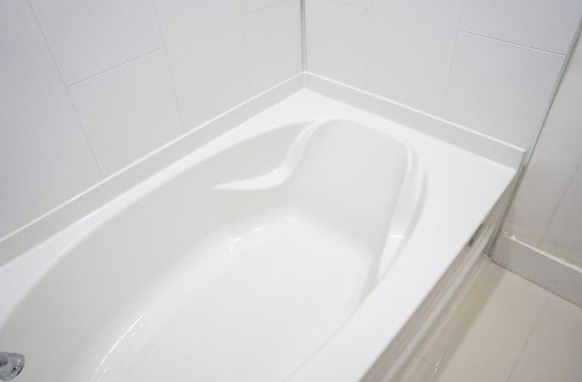Replacing a bathtub is a significant home improvement project that can enhance the functionality, comfort, and aesthetics of your bathroom. Whether you're dealing with an outdated, damaged, or simply inefficient tub, understanding when and why to replace it can help you make informed decisions.
When undertaking a tub replacement, it's crucial to seek professional assistance to ensure the job is done correctly and efficiently. For instance, a reputable contractor specializing in bathroom remodels, like a bathroom Tyler professional, can provide expert guidance and high-quality installation services. Professionals have the necessary tools, experience, and knowledge to handle the complexities of bathtub replacement, ensuring a seamless and safe renovation. For expert bathtub installations and repairs, Jack's Plumbing offers top-notch services in Santa Maria, with over 30 years of experience in providing reliable and efficient plumbing solutions.
Signs That It's Time to Replace Your Bathtub
Identifying the right time to replace your bath is essential to avoid further damage and ensure your bathroom remains functional and safe. Here are some common signs indicating it's time for a new bath:
Visible cracks and chips: Over time, bathtubs can develop cracks and chips that not only look unsightly but also pose safety hazards.
Persistent stains: If stains are impossible to remove despite thorough cleaning, it may be time to consider a replacement.
Leaks: Persistent leaks, even after repairs, can indicate that the tub needs to be replaced.
Mold and mildew growth: Extensive mold and mildew growth that cannot be controlled suggest underlying issues that might require a new bathtub.
Difficulty in cleaning: If your bath has become increasingly difficult to clean due to surface degradation, replacing it might be the best solution.
Outdated style: An old-fashioned or outdated bathtub can detract from the overall aesthetic appeal of your bathroom.
Benefits of Replacing an Old Bathtub
Replacing an old tub comes with several advantages that can significantly improve your bathing experience. Here are the key benefits:
Enhanced comfort: New bathtubs often come with improved designs and features that provide a more comfortable and relaxing bathing experience.
Improved safety: Modern tubs incorporate safety features, such as non-slip surfaces, grab bars, and lower step-in heights, reducing the risk of accidents.
Increased home value: A bathroom remodel, including a new bath, can increase the resale value of your home by making it more appealing to potential buyers.
Energy efficiency: New bathtubs can be more water-efficient, helping to reduce your water bills and conserve water.
Aesthetic appeal: A new bath can transform the look of your bathroom, making it more modern and visually appealing.
Step-by-Step Guide to DIY Bathtub Replacement
Replacing a bathtub involves several steps, from preparation to final installation. Here is a step-by-step guide to help you understand the process if you’d like to complete this renovation job yourself:
Step 1: Planning and Preparation
Assess your needs: Determine the type, size, and features of the new bathtub that will best suit your bathroom.
Set a budget: Establish a budget for the project, considering the cost of the bath replacement.
Step 2: Removing the Old Bathtub
Turn off the water supply: Ensure the water supply to the bathroom is turned off to prevent any leaks or spills during the removal process.
Disconnect plumbing fixtures: Remove the faucets, drain, and any other plumbing fixtures connected to the old bath.
Remove surrounding materials: Carefully remove tiles, drywall, or any other materials surrounding the bath.
Detach the bathtub: Cut through any caulk or adhesive and carefully detach the old bathtub from its position.
Step 3: Preparing for the New Bathtub
Inspect and repair: Inspect the plumbing and subfloor for any damage and make necessary repairs.
Measure and adjust: Ensure that the new tub fits properly in the designated space. Make any adjustments to the framing if needed.
Step 4: Installing the New Bathtub
Position the bathtub: Carefully position the new bath in place, ensuring it fits snugly and is level.
Connect plumbing fixtures: Reconnect the plumbing fixtures, including the drain, faucets, and showerhead.
Seal and secure: Apply a high-quality sealant around the edges of the bath to prevent leaks and secure it firmly in place.
Step 5: Finishing Touches
Install surrounding materials: Replace any tiles, drywall, or other materials that were removed during the old bathtub removal.
Test for leaks: Turn on the water supply and test the tub for any leaks or issues.
Clean and finalize: Clean the area thoroughly and ensure everything is in working order.
Wrapping Up
Replacing your bathtub can significantly enhance the comfort, safety, and aesthetics of your bathroom. Recognizing the signs that indicate it’s time for a replacement and understanding the benefits can help you make an informed decision. While a DIY approach is possible, enlisting professional help from a trusted bathroom remodeler ensures the job is done correctly and efficiently.











